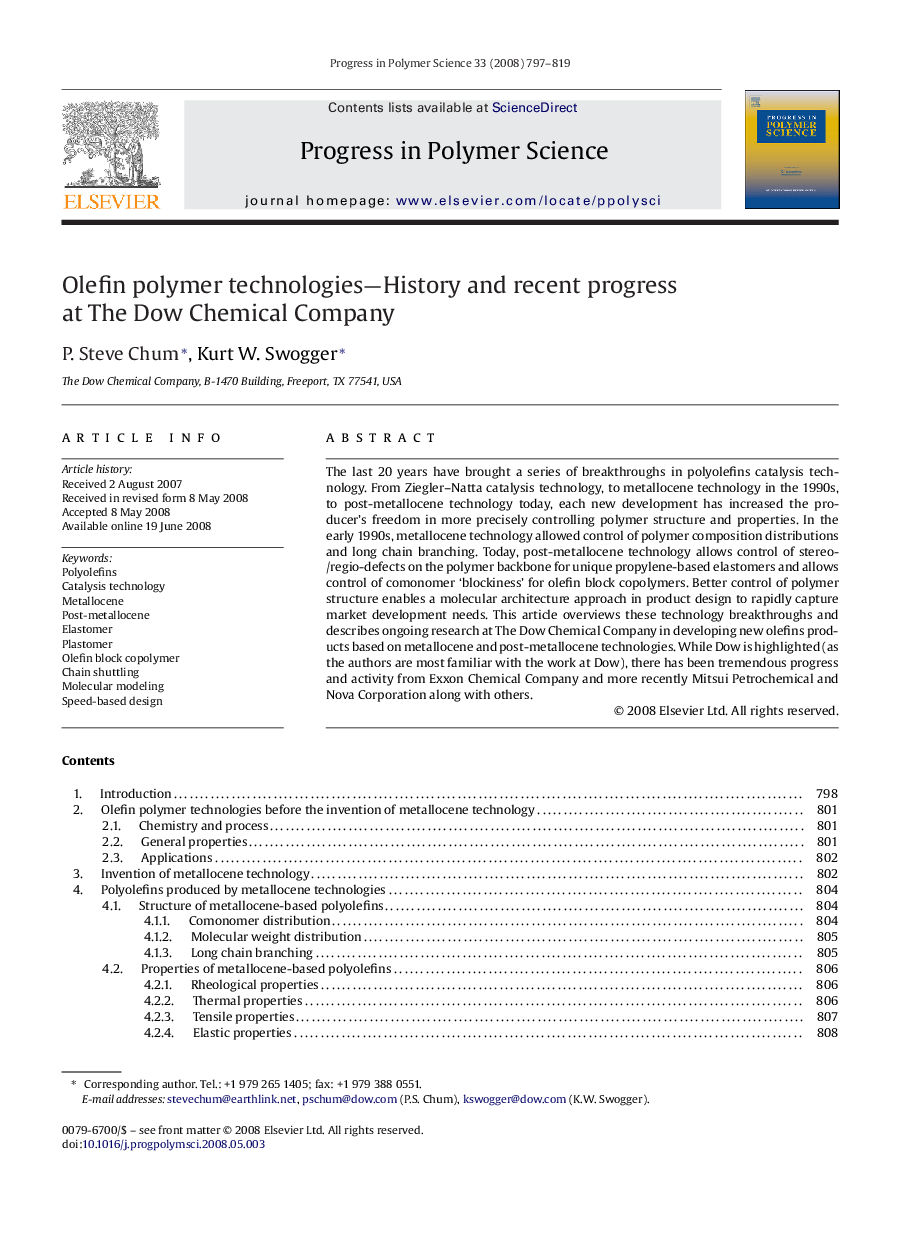| Article ID | Journal | Published Year | Pages | File Type |
|---|---|---|---|---|
| 5208679 | Progress in Polymer Science | 2008 | 23 Pages |
Abstract
The last 20 years have brought a series of breakthroughs in polyolefins catalysis technology. From Ziegler-Natta catalysis technology, to metallocene technology in the 1990s, to post-metallocene technology today, each new development has increased the producer's freedom in more precisely controlling polymer structure and properties. In the early 1990s, metallocene technology allowed control of polymer composition distributions and long chain branching. Today, post-metallocene technology allows control of stereo-/regio-defects on the polymer backbone for unique propylene-based elastomers and allows control of comonomer 'blockiness' for olefin block copolymers. Better control of polymer structure enables a molecular architecture approach in product design to rapidly capture market development needs. This article overviews these technology breakthroughs and describes ongoing research at The Dow Chemical Company in developing new olefins products based on metallocene and post-metallocene technologies. While Dow is highlighted (as the authors are most familiar with the work at Dow), there has been tremendous progress and activity from Exxon Chemical Company and more recently Mitsui Petrochemical and Nova Corporation along with others.
Related Topics
Physical Sciences and Engineering
Chemistry
Organic Chemistry
Authors
P. Steve Chum, Kurt W. Swogger,
